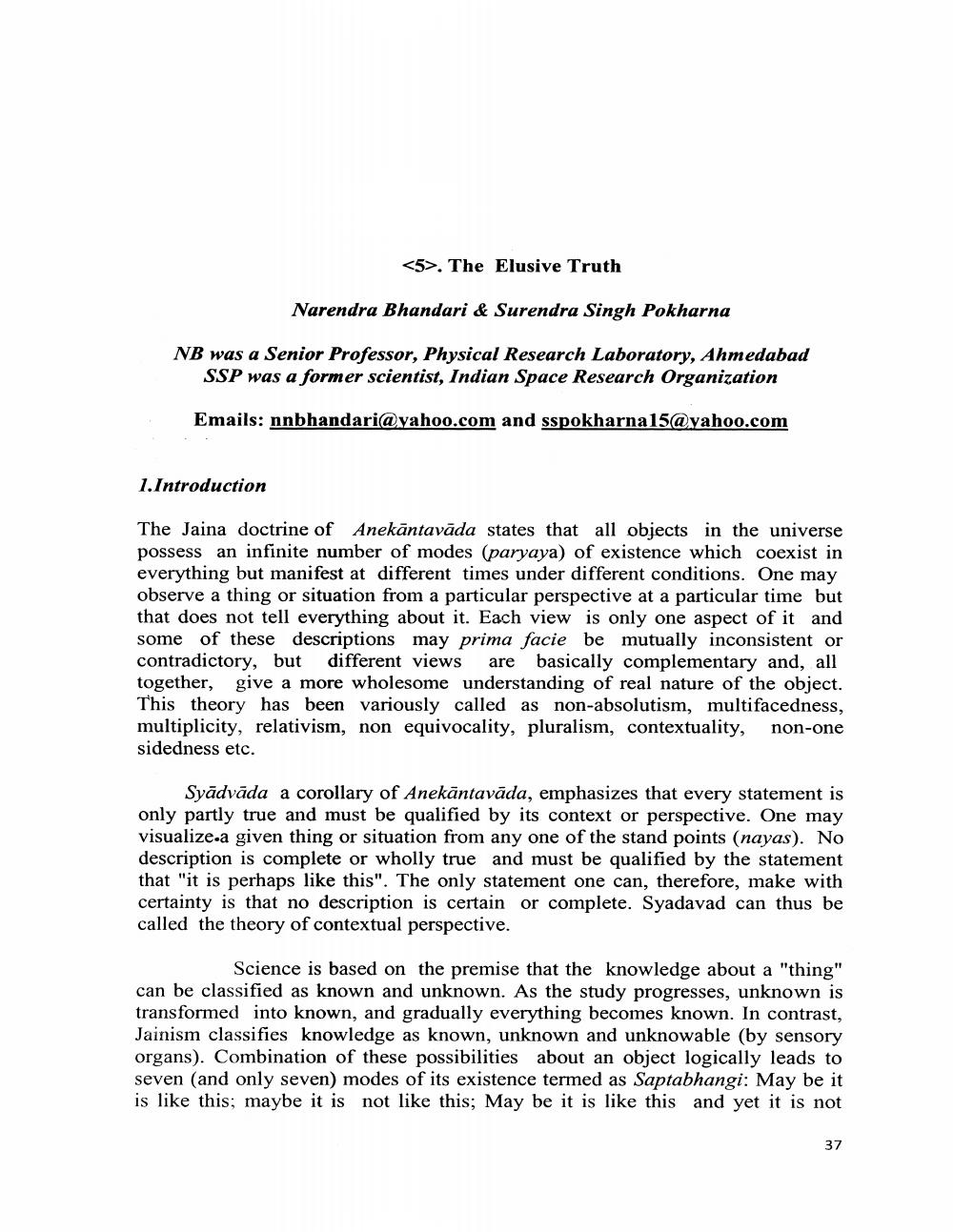________________
<5>. The Elusive Truth
Narendra Bhandari & Surendra Singh Pokharna
NB was a Senior Professor, Physical Research Laboratory, Ahmedabad
SSP was a former scientist, Indian Space Research Organization
Emails:
[email protected] and
[email protected]
1. Introduction
The Jaina doctrine of Anekāntavāda states that all objects in the universe possess an infinite number of modes (paryaya) of existence which coexist in everything but manifest at different times under different conditions. One may observe a thing or situation from a particular perspective at a particular time but that does not tell everything about it. Each view is only one aspect of it and some of these descriptions may prima facie be mutually inconsistent or contradictory, but different views are basically complementary and, all together, give a more wholesome understanding of real nature of the object. This theory has been variously called as non-absolutism, multifacedness, multiplicity, relativism, non equivocality, pluralism, contextuality, non-one sidedness etc.
Syādvāda a corollary of Anekāntavāda, emphasizes that every statement is only partly true and must be qualified by its context or perspective. One may visualize a given thing or situation from any one of the stand points (nayas). No description is complete or wholly true and must be qualified by the statement that "it is perhaps like this". The only statement one can, therefore, make with certainty is that no description is certain or complete. Syadavad can thus be called the theory of contextual perspective.
Science is based on the premise that the knowledge about a "thing" can be classified as known and unknown. As the study progresses, unknown is transformed into known, and gradually everything becomes known. In contrast, Jainism classifies knowledge as known, unknown and unknowable (by sensory organs). Combination of these possibilities about an object logically leads to seven (and only seven) modes of its existence termed as Saptabhangi: May be it is like this; maybe it is not like this; May be it is like this and yet it is not
37




